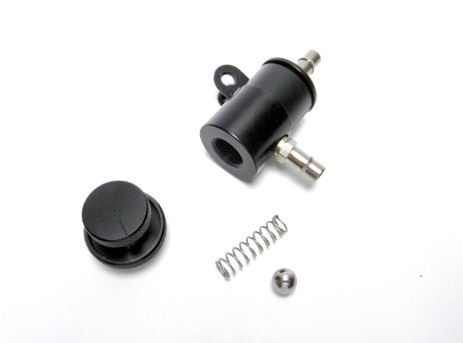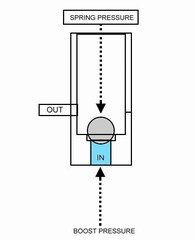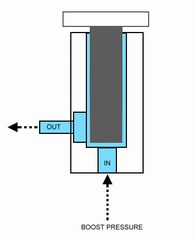Frequently Asked Questions

The BoostValve turbo boost controller is an adjustable pressure relief valve or "check valve". Some may call this a "gated valve". It is NOT a "bleeder valve".
This maximizes the efficiency of the turbo during the spool-up by using the greatest amount of air possible to spin the turbo charger. Most boost control systems waste air by venting a significant amount of air, even many factory boost control systems waste available exhaust energy during this crucial spool-up period. Once the turbo spools up to the desired boost, the BoostValve opens, quickly opening the waste gate. Boost pressure is held at this level with accuracy unmatched by many expensive methods of boost control.
Camparison of a BoostValve and a bleeder valve
The BoostValve prevents boost pressure from opening the turbo's waste gate until the desired preset boost level is reached. Inside the valve is a precision stainless steel ball that is held in place by spring tension. During the turbo's spool-up (as pressure is building) spring tension in the valve is greater than the boost pressure pushing against the ball, so the ball prevents the air from flowing to the waste-gate actuator.


